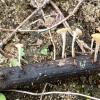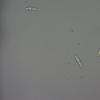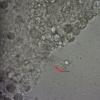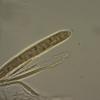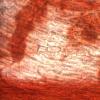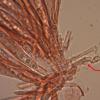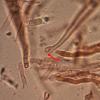
30-12-2025 09:04
Hello.A Pyrenomycete sprouting sparsely but very d

29-12-2025 17:44
Isabelle CharissouBonjour,J'aimerais savoir si d'autres personnes au

12-11-2021 00:03
Lepista ZacariasHi everybody,A week ago in my fiels trip I noticed

29-12-2025 17:12
 Bernard CLESSE
Bernard CLESSE
Bonjour à toutes et tous,Pourriez-vous m'aider à

29-12-2025 17:01
Gernot FriebesHi,I'm looking for help with this hyphomycete with

29-12-2025 08:30
Hello.A tiny ascomycete sprouting under Juniperus

29-12-2025 10:15
Hulda Caroline HolteHello, I found and collected this propoloid ascom

29-12-2025 09:38
Oskari VirtanenHi,could anyone help me identify this, I suspect P
Rutstroemia henningsiana?
Marc Detollenaere,
22-09-2023 18:10
 Dear Forum,
Dear Forum,On black remains, probably stromatized tissue, of Juncus effusus, I found some long-stalked apothecia of 5-6mm long.The ectal excipulum consisted of Text prismatica, asci had an amyloid ring, no croziers were found.Spores were hyaline, fusiform and measured 17-18x4µ and contained several large guttules (OCI 4-5).Paraphyses were cylindrical.No sclerotia were found.
Could this be R henningsiana?
Nihad Omerovic,
22-09-2023 21:35
Re : Rutstroemia henningsiana?
Macro, spores, paraphyses content don't look like in R. henningsiana; more like Hymenoscyphus.
Hans-Otto Baral,
23-09-2023 08:45

Re : Rutstroemia henningsiana?
Yes, and it looks like Hymenoscyphus macroguttatus. That species must have croziers.
Lothar Krieglsteiner,
23-09-2023 09:19

Re : Rutstroemia henningsiana?
... and by the way: the substrate is not Juncus but a dicotylous plant.
Yours, Lothar
Yours, Lothar
Marc Detollenaere,
23-09-2023 10:44
Hans-Otto Baral,
23-09-2023 10:47

Re : Rutstroemia henningsiana?
Yes!
Marc Detollenaere,
23-09-2023 10:47

Re : Rutstroemia henningsiana?
Lothar,
I found it in a field full of Juncus effusus but indeed, the onset of side branches does not fit with Juncus.It has to be be a dicotyle.
I found it in a field full of Juncus effusus but indeed, the onset of side branches does not fit with Juncus.It has to be be a dicotyle.


